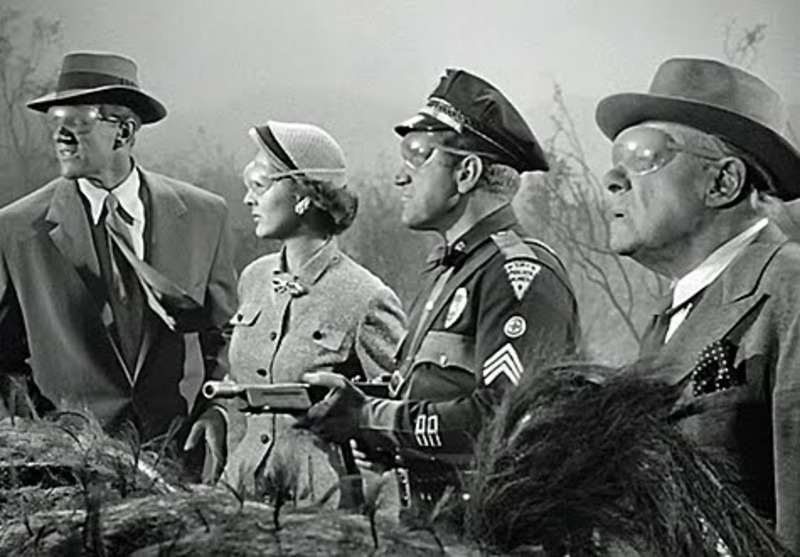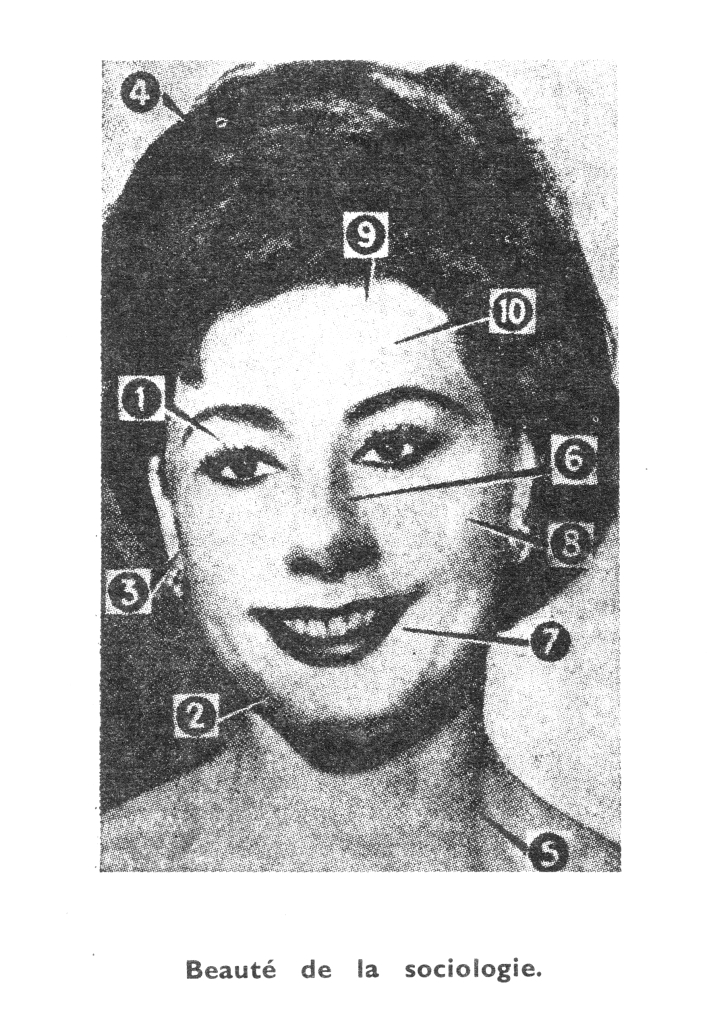
1.
What is the sinister science? For a start, it’s this blog. But could it be something else?
2.
I have another blog called Notes from the sinister quarter. Originally, I set it up to be the platform for my PhD research—primarily on aspects of the life of the Situationist International (1957-1972). I took its name from Ivan Chtcheglov’s proto-situationist text, Formulary for a New Urbanism (1953).
In his article, Chtcheglov envisaged a city given over to the playful desire for the total creation of life. The city was presented as a possible realisation of Guy Debord’s idea of the ‘constructed situation’. The emphasis was on play and the ‘total creation’ of life in opposition to the chaotic, exploitative, and oppressive reality of the capitalist city.[1]
In clear opposition to the so-called functional capitalist city divided into commercial, residential, industrial and governmental districts, Chtcheglov proposed that his city of play and desire would ‘correspond to the whole spectrum of diverse feelings that one encounters by chance in everyday life.’ [2] Thus, he imagined various districts—quartiers in the French—whose names indicated something that transcended the merely descriptive or habitual. But of all his proposed quarters one in particular stood out.
The Sinister Quarter […] would replace all the dumps, dives and other gateways to the underworld that many peoples once possessed in their capitals: they symbolized all the evil forces of life. The Sinister Quarter would have no need to harbor real dangers, such as traps, dungeons or mines. It would be difficult to get into, with a hideous decor (piercing whistles, alarm bells, sirens wailing intermittently, grotesque sculptures, power-driven mobiles, called Auto-Mobiles), and as poorly lit at night as it was blindingly lit during the day by the excessive use of reflective phenomena. At its centre, the “Square of the Appalling Mobile.” And just as the saturation of the market with a product causes the product’s market value to fall, children and adults alike would learn not to fear the anguishing occasions of life as they explored the Sinister Quarter, but rather be amused by them.[3]
Of course, Chtcheglov, Debord and other young ‘International Letterists’ imagined their city of creative desire amidst their play within and without the dumps and dives of Paris—a living sketch of the projected sinister quarter and situationist city. Indeed, Chtcheglov’s Formulary… would prove crucial to the early years of the Situationist International, particularly of what would become known as ‘unitary urbanism’. By proposing the use of literary and other artistic works as ‘blueprints’ liberated from the mausoleum of culture to aid in the construction of future situations, Chtcheglov anticipated the later theory of détournement. Against much of the contemporaneous Marxist and Anarchist orthodoxy, Guy Debord would later make explicit what was implied by Chtcheglov’s vision: in order to be practical, any methodological critique of capitalist urbanism must encompass an argument for what comes after. Or even more succinctly: the critical means must encompass the end aimed for:
[T]he practice of utopia only makes sense if it is closely linked to the practice of revolutionary struggle. The latter, in its turn, cannot do without such a utopia without being condemned to sterility.[4]
3.
There is an article by André Breton that reminds me of Chtcheglov’s Formulary…—a precursor if you will. Breton’s article, translated as ‘Once Upon A Time’, was first published in the surrealist journal Le Surréalisme au service de la Révolution, no. 1 (1930). In the article, Breton imagined establishing a house and grounds on the outskirts of Paris dedicated to placing its temporary denizens into a ‘position which seems to be as poetically receptive as possible’.[5]
What Chtcheglov did for the imaginary city, Breton attempted on the scale of a single building and its immediate surrounds. In Breton’s case a certain sinister quality pervades the entirety of his project:
Nothing grand. Just around thirty rooms with, as far as possible, long corridors that would be very dark or that I would myself make dark. […]
For each bedroom, a large clock made of black glass will be set to chime especially well at midnight. […]
There will be hardly anything but small study lamps with green lampshades that will be dimmed very low. The blinds will remain lowered day and night.
Only the white-washed reception hall will be lit with an invisible ceiling light and it will contain no other furniture, besides two authentic Merovingian chairs, and a stool on which will sit the perfume bottle tied up with a pale ribbon, inside which a discoloured rose will be immersed with its stems and leaves equally lifeless […].[6]
The décor is distinctly—and inevitably—dream-like, pervaded with the spectral gloom one would expect of such nocturnal visions. Breton perversely equips his playground with a single law, redolent of his own grip upon the reigns of surrealist (anti) power: a firm injunction against sex, ‘strictly forbidden, under penalty of immediate and definitive expulsion’ from the building and its grounds.[7] One wonders how such a directive would have been enforced in a zone otherwise given over to chance and play.
There are other details: rooms almost impossible to gain entry to—possibly the one most in keeping with Chtcheglov’s difficult to access quarter. What I find most fascinating, and commensurate with the Formulary…, is Breton’s idea of a distinctly anti-capitalist architecture as re-enchantment, as the recovery and practical elaboration of those fantastical stories we were told as children—stories whose main failing is precisely their role as forms of inoculation, subservient to the rapidly approaching adult world of wage labour and other alienations.
As Breton may have remarked, somewhere, anywhere: the sinister is what tends to become real.
4.
So, having got this far you might be wondering: is there a sinister science?
Without doubt, the sinister science blog draws inspiration from Chtcheglov’s imaginary city and Breton’s dream house. To that extent, I am more than happy to declare the surrealist and situationist lineage of this project. However, “the sinister science” is, for me, no mere bon mot or frivolous affectation—even if it is also this. I also sincerely believe in a sinister science, one that bears comparison to a more general sense of science—what is called Wissenschaft in German—rather than the modern restricted sense of what was once called the natural sciences.
If there is a single principle of the sinister science, it is error. The anti-royal road to truth is littered with our blunders and mistakes. In part, this is Hegel’s argument: the false is a moment of the true. But he continues: no longer as the false.[8] Hegel’s truth is not founded upon the principle of bivalence and “falsifiability”. Rather, error is resolved as a moment of the process of truth (and so, per the comments above, not false at all). Without digressing into an examination of Hegel’s truth versus conceptions of the truth value of propositions, for now it is enough to hold onto the following: Hegel is more concerned with truth as a process and the role of error in this process. Error, in Hegel’s sense, is only false to the extent that it is considered in abstraction from such sensuous processes, and so posed in a less than splendid isolation from the entire truth of the matter. Indeed, in The Phenomenology of Spirit, Hegel draws attention to the crucial role that error has in the movement of truth, insofar as error and contradiction are generative of the processes which resolves them. Unlike the analytic sense of truth, Hegel’s truth is not a question of the truth value of a particular proposition considered in isolation. Truth, by his reckoning, is not so much arrived at as it is the form and content of the entire process.
However, Hegel’s conception of error and truth should not be confused with more recent conceptions of the relativism of truth derived from Friedrich Nietzsche. Nietzsche infamously argued that truth is merely the history of an error.[9] In contrast to Hegel, Nietzsche was not interested in the relationship between truth and error, but rather keen to demonstrate that all purported truths are merely so many fictions. All that make them true, by his reckoning, is the extent to which they embody a will to power that triumphs in the face of other, competing ‘truths’. More recently this has been recast by Michel Foucault as the theory of discursive power. As has been often pointed out, the chief problem with such claims is that they tend to be self-undermining. By presenting truth as the function of a successful will to power, such theories undermine their own implicit claim to being true.
Crucial to Nietzsche’s conception of the necessarily fictitious nature of ideas about reality is the belief in the utter irreconcilable difference of thought and being. In his reckoning, it is this difference that is at the root of the fictitious claims about being that have been fashioned by humans. However, in making this claim Nietzsche follows his master, Schopenhauer, albeit with the more transcendental aspects of the latter’s Kantian philosophy hacked off. Nonetheless, and despite his apparent loathing of the thinker of Königsberg, Nietzsche maintains the unfortunate dualism of Kant’s schema, insofar as thought and thinking are cast as irreducibly other to what is not thought. Thereby, even though Nietzsche and his followers claim the mantle of radical materialists, they in effect maintain precisely the spectral Platonism that they so loudly protest. Except, in their case, the dualism they eschew is hidden behind the assertion of a flat ontology of immanence.

To be absolutely clear, the sinister science is incompatible with Foucauldian and Nietzschean notions of error. As I hope I have made clear, the sinister science is closer to Hegel’s negative dialectic and Marx’s redeployment of this under the aegis of his ‘materialist conception of history’. Indeed, that this science is implicated in not only the criticism of all that is, but equally its transformation, is precisely what makes it sinister. And with due alteration, I can induce Hegel to remark that history is the sinister bench upon which the cosmos itself will be dissected and rearranged. Or, as Marx and Engels purportedly wrote, shortly before crossing out their fruitful error:
We know only a single science, the sinister science.
FOOTNOTES
[1] Ivan Chtcheglov, Formulary for a New Urbanism, 1953.
[2] Ibid.
[3] Ibid. Translation modified.
[4] Daniel Blanchard & Guy Debord. Preliminaries Toward Defining a Unitary Revolutionary Program, 1960. Translation modified.
[5] André Breton, ‘Once Upon A Time’, from The Dedalus Book of Surrealism 2, translated by Michael Richardson, Langford Lodge: 1994, p. 5.
[6] Ibid., pp. 2, 3-4.
[7] Ibid., p. 3.
[8] See, Hegel, The Phenomenology of the Spirit, Preface, thesis 39 (T. Pinkard translation).
[9] See, Nietzsche, Twilight of the Idols.


